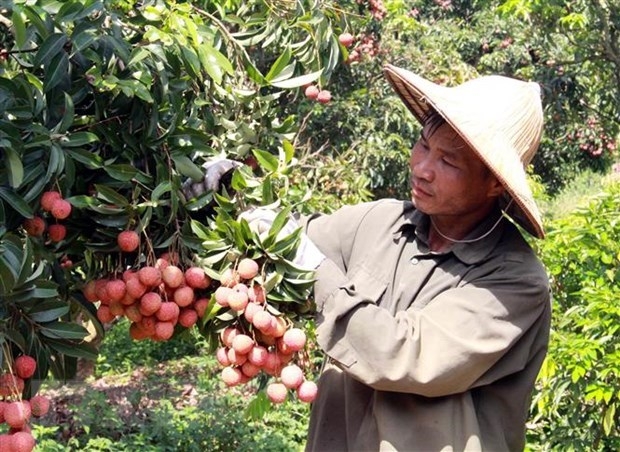Export target of US$41 billion within reach for agricultural sector
Export target of US$41 billion within reach for agricultural sector
Though COVID-19 has hampered exports, the agricultural sector remains confident of achieving this year’s export target of more than US$41 billion.

A farmer in Bắc Giang Province harvest lychees that meet standards for export to Japan. — VNA/VNS Photo
|
The coronavirus outbreak has created obstacles to production and trade, while severe natural disasters such as drought and saltwater intrusion, especially in the Mekong Delta, along with plant and animal diseases posed further challenges to the sector this year.
Most key agricultural exports posted declines in the early months of 2020.
Facing that fact, the agricultural sector has conducted policies flexibly to fulfil export targets, Minister of Agriculture and Rural Development Nguyễn Xuân Cường said.
Thanks to that, agro-forestry-fishery exports are forecast to surpass the goal of $41 billion this year. Exports to nearly 200 markets, including large markets such as the US, the EU, Japan, and China, earned Việt Nam second place in Southeast Asia and 15th in the world in terms of agro-forestry-fishery exports, he said.
The sector has also managed to pave the way for different fruits to enter new markets, like fresh lychee to Japan and pomelo to Chile.
Notably, he said, rice continues to record strong increases in exports. The Mekong Delta, the largest agricultural hub in Việt Nam, reaped a bumper rice harvest despite the historic drought, thanks to crop rescheduling. Surging food demand amid COVID-19 also provided Việt Nam with the opportunity to boost rice exports.
Strong demand from a host of markets fuelled rising export prices for Vietnamese husked rice, which are now about $500 per tonne. Free trade deals, especially the EU-Việt Nam Free Trade Agreement (EVFTA), have also opened up opportunities for the commodity.
Deputy Minister Phùng Đức Tiến said as soon as Prime Minister Nguyễn Xuân Phúc approved the EVFTA implementation plan, the ministry built an action programme for the agricultural sector.
As a result, from the first month the trade pact took effect, in August, shipments of agro-forestry-fishery products to the EU grew 15-17 per cent against a year earlier, he said, adding that the sector has maintained its focus on traditional markets like China, the US, and Japan.
Wood product exports have accounted for some 30 per cent of the agricultural sector’s total overseas shipments but were not immune from the impact of the COVID-19 pandemic.
Chairman of the Việt Nam Timber and Forest Product Association (VIFOREST), Đỗ Xuân Lập, said businesses have strived to seek new ways in the face of the pandemic’s complex developments.
Not only selling products directly to consumers or promoting goods at fairs, enterprises have also swiftly moved to online platforms such as Alibaba and Amazon. They have also tried to become more interconnected and cut dependence on external partners, according to Lập.
He expects forestry products will see the strongest export growth among all commodities in the agricultural sector this year, with revenue topping $12.6 billion, up 11.5 per cent year-on-year.



























